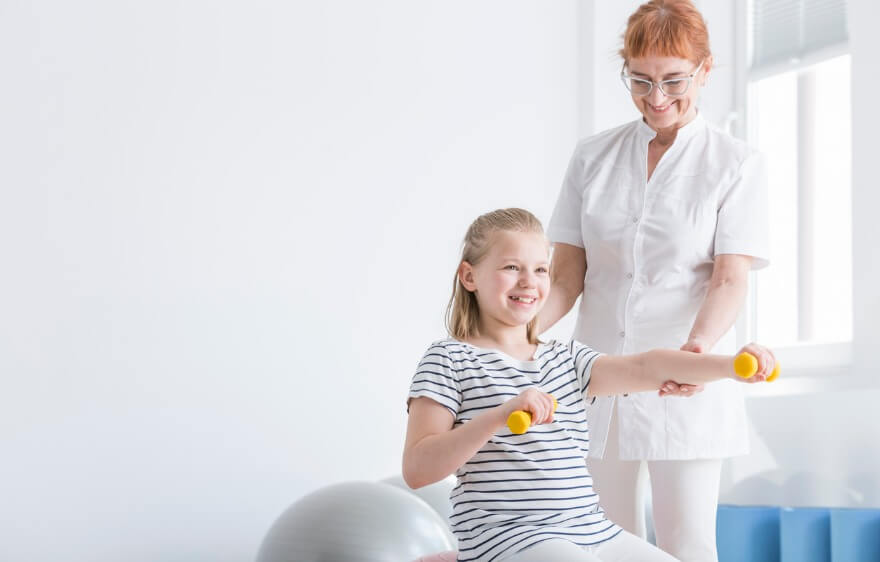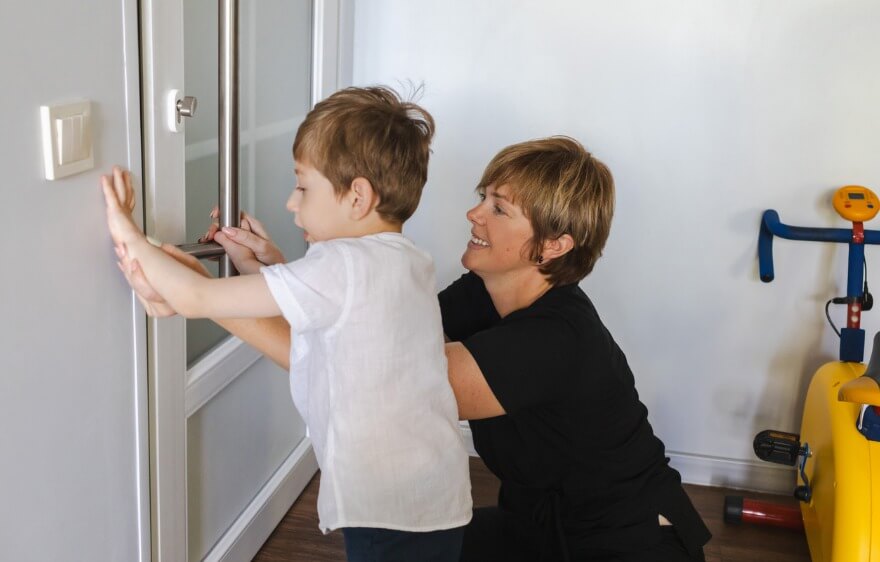It’s time to stimulate the senses! If you want to help your little one manage their sensory needs, you’re in the right place. Overcoming sensory issues doesn’t have to be a struggle — it can be a blast! In this blog post, we’ll explore what a sensory diet is, why it’s important, and some fantastic sensory diet examples to include in your child’s daily routine. With these great sensory activities, your kiddos will be begging for seconds!
What is a sensory diet?
A sensory diet is a personalized plan of sensory activities designed to help children with sensory processing issues stay focused, calm, and organized throughout the day. Just like a nutritional diet provides essential nutrients for the body, a sensory diet offers necessary sensory input that helps children function at their best. These activities are tailored to meet each child’s specific needs, providing the right type and amount of sensory stimulation. Sensory diets can include various activities that stimulate different senses, such as touch, movement, sight, sound, and smell. The concept was developed for occupational therapy to address sensory processing disorders (SPD), a condition where the brain has trouble receiving and responding to information from the senses.
Why is a sensory diet important?
Children with sensory processing issues might seek out or avoid sensory input, affecting their ability to focus, learn, and interact with others. A sensory diet provides the right balance of activities to help regulate the sensory system, leading to improved attention, behavior, and emotional regulation. Here are some reasons why a sensory diet is crucial:
- Enhances Focus and Attention: Sensory diet activities can help children filter out distractions and focus on tasks.
- Improves Emotional Regulation: Sensory input can have a calming or alerting effect on the nervous system.
- Supports Social Interactions: By helping children feel more regulated and comfortable in their bodies, a sensory diet can improve their ability to engage in social interactions.
- Promotes Independence: As children learn to manage their sensory needs, they become more capable of handling daily tasks independently.
- Reduces Behavioral Issues: Many behavioral issues in children with sensory processing disorders stem from unmet sensory needs.
- Enhances Learning: A well-regulated sensory system is essential for learning. Sensory diet activities can prepare the brain for new information and help children retain what they have learned.
Incorporating a sensory diet into your child’s daily routine can make a difference in their ability to navigate their sensory world. These activities are not only beneficial but can also be lots of fun!
20 Examples of a Sensory Diet
1. Swinging
Swinging provides excellent vestibular input, which helps with balance and coordination. Set up a swing in your backyard or visit a local park. Encourage your child to swing back and forth, side to side, and in circular motions. The rhythmic movement can be very calming and help your child regulate their sensory system. For an added challenge, try having your child reach for objects or toss a ball while swinging. This is one of the many sensory diet examples that can be fun and beneficial.
2. Trampoline Time
Jumping on a trampoline is fun and offers significant proprioceptive input, which can help your child feel more organized and grounded. If you have a small trampoline at home, supervise your child as they jump, and join the fun! This activity can be an excellent way for your child to burn off excess energy and improve their balance and coordination. It’s another tremendous sensory diet activity that can be easily integrated into playtime.
3. Weighted Blankets
Weighted blankets provide deep pressure input, which can be incredibly soothing and help with relaxation and sleep. Choose a blanket that is about 10% of your child’s body weight. Use it during quiet times, like reading a book or watching a movie, or as a part of the bedtime routine. The gentle pressure can help your child feel more secure and calm. Including a weighted blanket in your sensory diet can enhance your child’s comfort.
4. Therapy Ball Exercises
A therapy ball is a versatile tool for providing both vestibular and proprioceptive input. Have your child sit on the ball and bounce gently, roll back and forth, or lie on their tummy and roll the ball under their body. These activities can help improve body awareness and coordination while also being a lot of fun. Therapy ball exercises offer both physical and sensory benefits.
5. Obstacle Courses
Creating an obstacle course is a great way to provide various sensory inputs. Use pillows, chairs, tunnels, and other household items to create a path for your child to navigate. Crawling under tables, jumping over cushions, and balancing on a narrow surface can help with motor planning, coordination, and sensory integration. Obstacle courses are perfect sensory diet activities for active engagement.
6. Sensory Bins
Fill bins with rice, beans, sand, or other textured materials, and hide small toys or objects for your child to find. This activity provides rich tactile stimulation and can help with fine motor skills. Encourage your child to use their hands to explore the different textures and search for hidden treasures. Sensory bins are classic sensory diet activities that offer endless possibilities for exploration.
7. Play Dough
Kneading, rolling, and shaping play dough can be calming and tactile-rich. Provide your child with various tools, such as rolling pins, cookie cutters, and plastic knives to enhance the experience. The resistance of the dough offers proprioceptive input that can help regulate their sensory system. Play dough activities are simple yet effective.
8. Water Play
Playing with water can be very soothing and engaging for children. Set up a water table or use a large container filled with water and add toys like cups, spoons, and small boats. Encourage your child to pour, splash, and explore the water. Adding bubbles or food coloring can make this activity even more exciting.
9. Listening to Music
Music can provide auditory input that helps regulate mood and focus. Create a playlist of your child’s favorite calming or rhythmic songs and play it during quiet times or transitions. Encourage your child to dance, sing along, or simply listen and relax. Music can be a powerful tool for emotional regulation. Including listening to music in your sensory diet, examples can enhance your child’s auditory experience.
10. Chewing Gum
Chewing gum or crunchy snacks like carrots, apples, or pretzels can offer oral sensory input that can be calming for some children. Keep these items handy when your child needs to focus or calm down. The act of chewing can provide proprioceptive input to the jaw and help with self-regulation. Chewing gum and crunchy snacks are practical for on-the-go situations.
11. Deep Pressure Hugs
Giving your child firm, deep-pressure hugs can help them feel secure and grounded. This type of proprioceptive input can be very calming and is often referred to as a “sensory hug.” Use these hugs during transitions, after a meltdown, or anytime your child needs extra comfort. Deep-pressure hugs are nurturing and promote connection and regulation.
12. Jumping Jacks
A quick round of jumping jacks can provide proprioceptive input and help with energy regulation. Try incorporating jumping jacks into your child’s daily routine, such as during homework breaks or before starting a new activity. Jumping jacks can be easily integrated into daily life.
13. Hand Fidgets
Small fidget toys can help children focus by providing constant, subtle sensory input. Items like stress balls, fidget spinners, or textured keychains can be kept in a backpack or pocket for easy access. These tools can be especially helpful during tasks that require concentration, like schoolwork or car rides.
14. Brushing Protocol
A sensory brush on the skin can provide tactile input and help with sensory regulation. This technique, often recommended by occupational therapists, involves brushing the child’s arms, legs, and back with a soft-bristle brush.
15. Balance Board
Standing on a balance board can enhance vestibular input and improve balance. Have your child practice standing on the board, rocking back and forth, or even trying simple games like tossing a ball while balancing. Balance board exercises are engaging sensory diet activities that build physical skills.
16. Nature Walks
Walking in nature provides a variety of sensory inputs from different environments and can be very calming. Take your child on a walk through a park, forest, or even just around the neighborhood. Encourage them to notice different sights, sounds, and smells. Nature walks offer holistic sensory experiences.
17. Visual Timers
Using visual timers can help children understand time and transitions, providing visual sensory input. Choose timers with clear visual cues, such as sand timers or digital timers with countdown displays. These tools can help your child manage time more effectively and reduce anxiety around transitions.
18. Aromatherapy
Pleasant scents like lavender can provide olfactory input that may help with relaxation. Use essential oils or scented candles to create a calming environment. You can also try incorporating scented play dough or sensory bins to add an olfactory element to playtime.
19. Stretching
Simple stretching exercises can provide proprioceptive input and help with body awareness. Create a stretching routine that includes movements like reaching for the sky, touching toes, and gentle yoga poses. Encourage your child to stretch in the morning, before bed, or anytime they need a calming activity.
20. Bubble Play
Blowing and popping bubbles can be a fun way to provide visual and tactile input. Use a bubble wand or bubble machine and encourage your child to chase and pop the bubbles. This activity can help improve hand-eye coordination and is a great way to engage in playful, sensory-rich interaction.
We Have Sensory Diet Experts
Want help curating a sensory diet for your kiddo? If you think your child could benefit from these kinds of sensory activities, we’ll connect you with a Care Options for Kids pediatric occupational therapist! They’ll assess your child’s unique sensory needs and create a fun, personalized sensory diet plan to boost their development. A well-designed sensory diet can bring remarkable improvements, helping your child reach their full potential and enjoy their daily activities. Ready to see your child thrive?
Schedule Your Child’s Care Assessment Today
At Care Options for Kids, we understand the unique challenges of caring for a child with health conditions. Our dedicated team of pediatric home health nurses is here to support your family with compassionate, expert care tailored to your child’s needs. Contact us today to schedule an assessment and learn how we can help you navigate this journey with confidence and care.
Click here to start your journey to better care.
This post is for educational and informational purposes only. You should always speak with your own therapist before implementing this information on your own.






